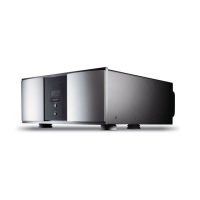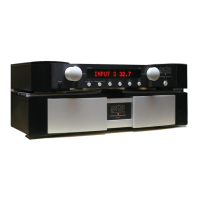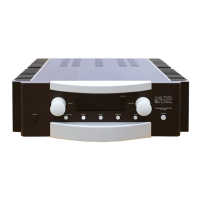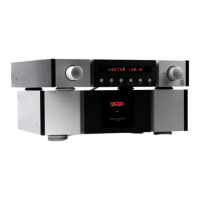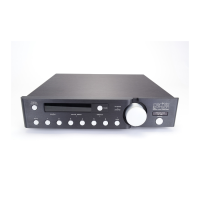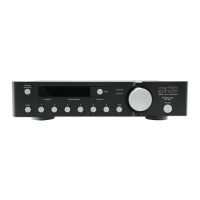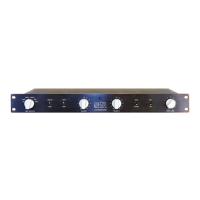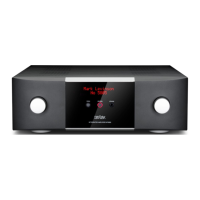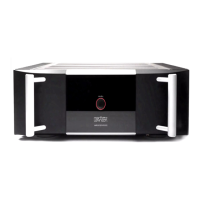Do you have a question about the Mark Levinson 431 and is the answer not in the manual?
Register the amplifier within 15 days of purchase online or by mail.
Guidance on positioning the amplifier for optimal performance and ventilation.
Ensuring adequate airflow for heat dissipation and proper cooling.
Details on initial performance improvement and component break-in.
Explanation of the different power states: Off, Sleep, Standby, and On.
Guidelines for maintaining optimal performance through continuous operation.
Details on the robust power supply components and their impact.
Explanation of the balanced input topology and its benefits.
Description of the front panel indicator LED and its diagnostic states.
Operation of the front panel power button for on/off control.
Operation of the front panel standby button for state changes.
Information on handles for safe lifting and moving of the amplifier.
Description of the output terminals for connecting loudspeakers.
Details on connecting unbalanced audio signals via RCA connectors.
Details on connecting balanced audio signals via XLR connectors.
Serial port for software upgrades and external control systems.
Ports for linking Mark Levinson components for shared control.
Connectors for DC trigger control signals for remote operation.
Switch to determine response to trigger signals (sleep or standby).
IEC-standard receptacle for connecting the AC power cord.
Instructions for connecting Mark Levinson components using Link ports.
Details on building custom Link communication cables.
Steps to establish a chain of linked components for shared control.
Diagnosing issues when there is no audio and the front panel LED is off.
Troubleshooting when the unit is in sleep mode and no audio is present.
Troubleshooting when the unit is in standby and no audio is present.
Diagnosing power-related faults indicated by a rapidly blinking LED.
Troubleshooting signal-related faults indicated by a specific LED pattern.
Diagnosing thermal faults indicated by a rapidly blinking LED.
Troubleshooting no audio when the LED is fully lit, indicating signal issues.
Diagnosing and resolving issues where the amplifier repeatedly shuts down.
Final steps to resolve persistent issues, including contacting support.
| Brand | Mark Levinson |
|---|---|
| Model | 431 |
| Category | Amplifier |
| Language | English |
